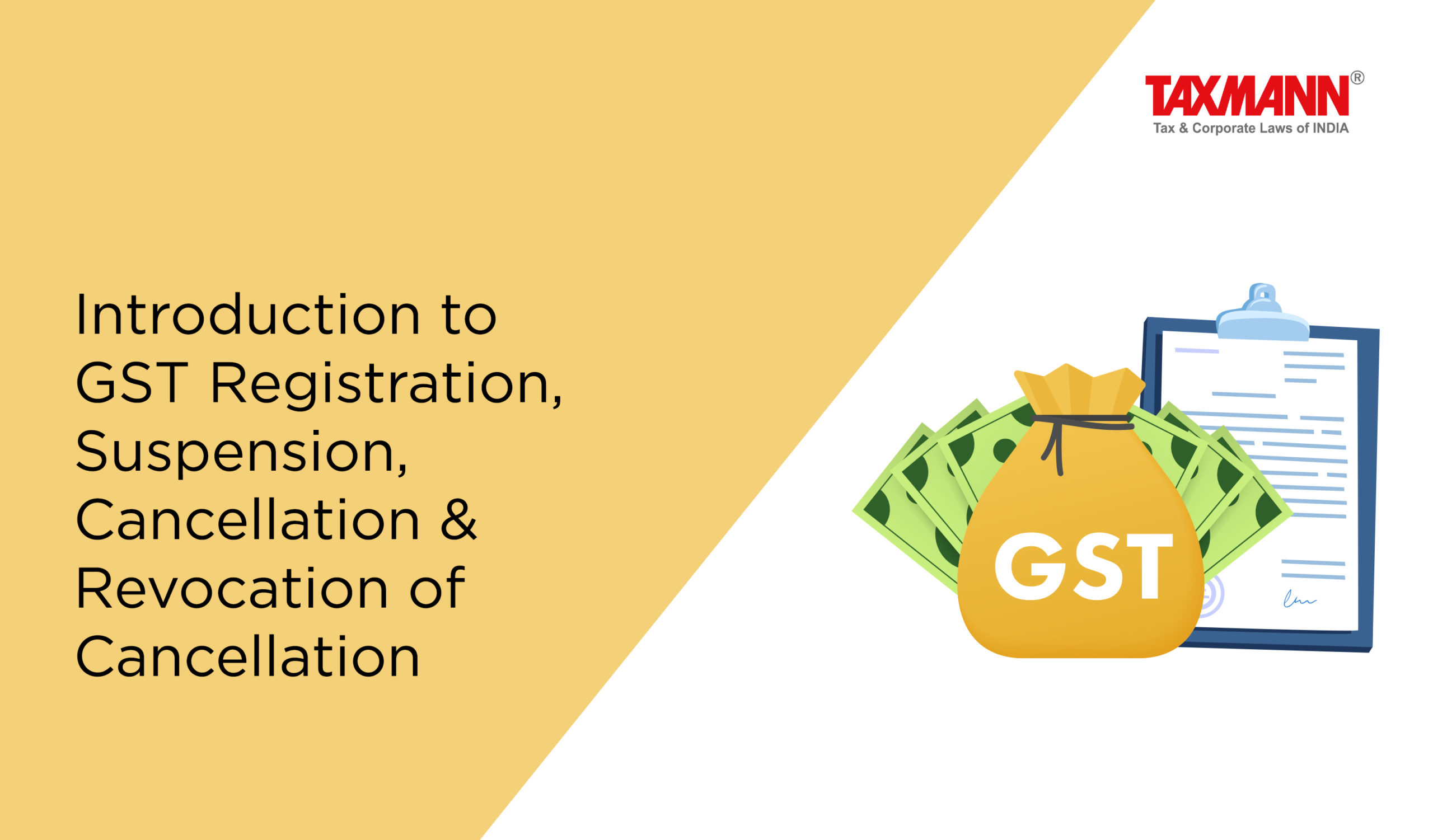Introduction to GST Registration, Suspension, Cancellation & Revocation of Cancellation
- Blog|GST & Customs|
- 2 Min Read
- By Taxmann
- |
- Last Updated on 20 July, 2023

Check out GST Practical Guides | Registration, Suspension, Cancellation & Revocation of Cancellation, a comprehensive guide to the practical aspects of GST law, detailing registration processes, special provisions, amendments, suspensions, and cancellations in an easy-to-understand language. It is amended by the Finance Act 2023 and is developed by the Goods & Services Tax Practitioners' Association of Maharashtra.
Registration is the most fundamental requirement for identification of taxpayers to ensure tax compliances in the economy. Registration under the GST Law implies obtaining a unique number from the jurisdictional tax authorities for the recognition as an authorised entity for tax purposes and for having a verification mechanism for its compliances. Without registration, a person can neither collect tax from his customers nor claim any input tax credit paid by him.
Under GST, the registration requirements are linked with the levy of tax. The taxable event under GST is ‘supply’. Every person who undertakes a transaction amounting to supply, has to register himself under the GST Law, if his aggregate turnover in a financial year exceeds the threshold limit prescribed. Hence, the registration provisions not only bear significance for compliance purposes, but also for identification of person liable to be pay tax.
In one of the landmark case of Mathuram Agarwal vs. State of Madhya Pradesh (1999) 8 SCC 667 (SC), it was held by Hon’ble Supreme Court of India that:
“The Statue should clearly and unambiguously convey the three components of the tax law i.e.
- the subject of the tax,
- who is liable to pay the tax and
- the rate at which the tax is to be paid.
If there is any ambiguity regarding any of these ingredients in a taxation statue then there is no tax in law. Then, it is for the legislature to do the needful in the matter.”
It is uncomplicated from above that one of the limbs of levy is identification of the person who is liable to pay tax and in case of GST, the same is linked with the person who is liable to obtain registration.
Disclaimer: The content/information published on the website is only for general information of the user and shall not be construed as legal advice. While the Taxmann has exercised reasonable efforts to ensure the veracity of information/content published, Taxmann shall be under no liability in any manner whatsoever for incorrect information, if any.

Taxmann Publications has a dedicated in-house Research & Editorial Team. This team consists of a team of Chartered Accountants, Company Secretaries, and Lawyers. This team works under the guidance and supervision of editor-in-chief Mr Rakesh Bhargava.
The Research and Editorial Team is responsible for developing reliable and accurate content for the readers. The team follows the six-sigma approach to achieve the benchmark of zero error in its publications and research platforms. The team ensures that the following publication guidelines are thoroughly followed while developing the content:
- The statutory material is obtained only from the authorized and reliable sources
- All the latest developments in the judicial and legislative fields are covered
- Prepare the analytical write-ups on current, controversial, and important issues to help the readers to understand the concept and its implications
- Every content published by Taxmann is complete, accurate and lucid
- All evidence-based statements are supported with proper reference to Section, Circular No., Notification No. or citations
- The golden rules of grammar, style and consistency are thoroughly followed
- Font and size that’s easy to read and remain consistent across all imprint and digital publications are applied




 CA | CS | CMA
CA | CS | CMA
